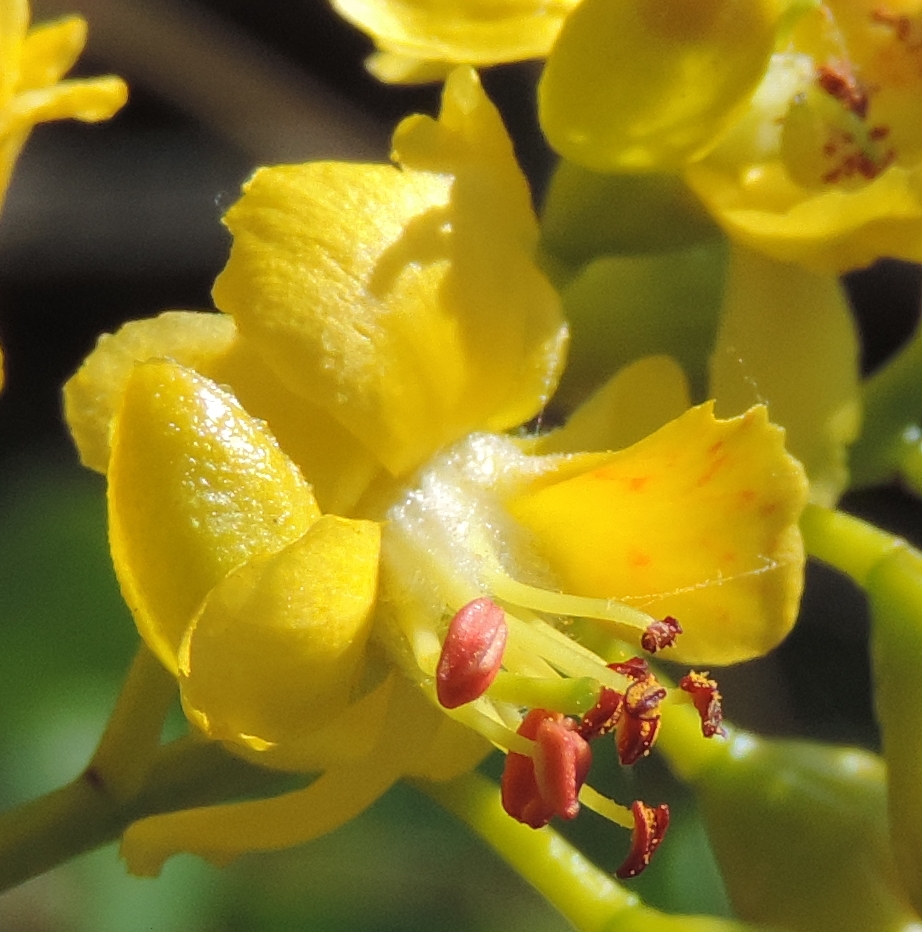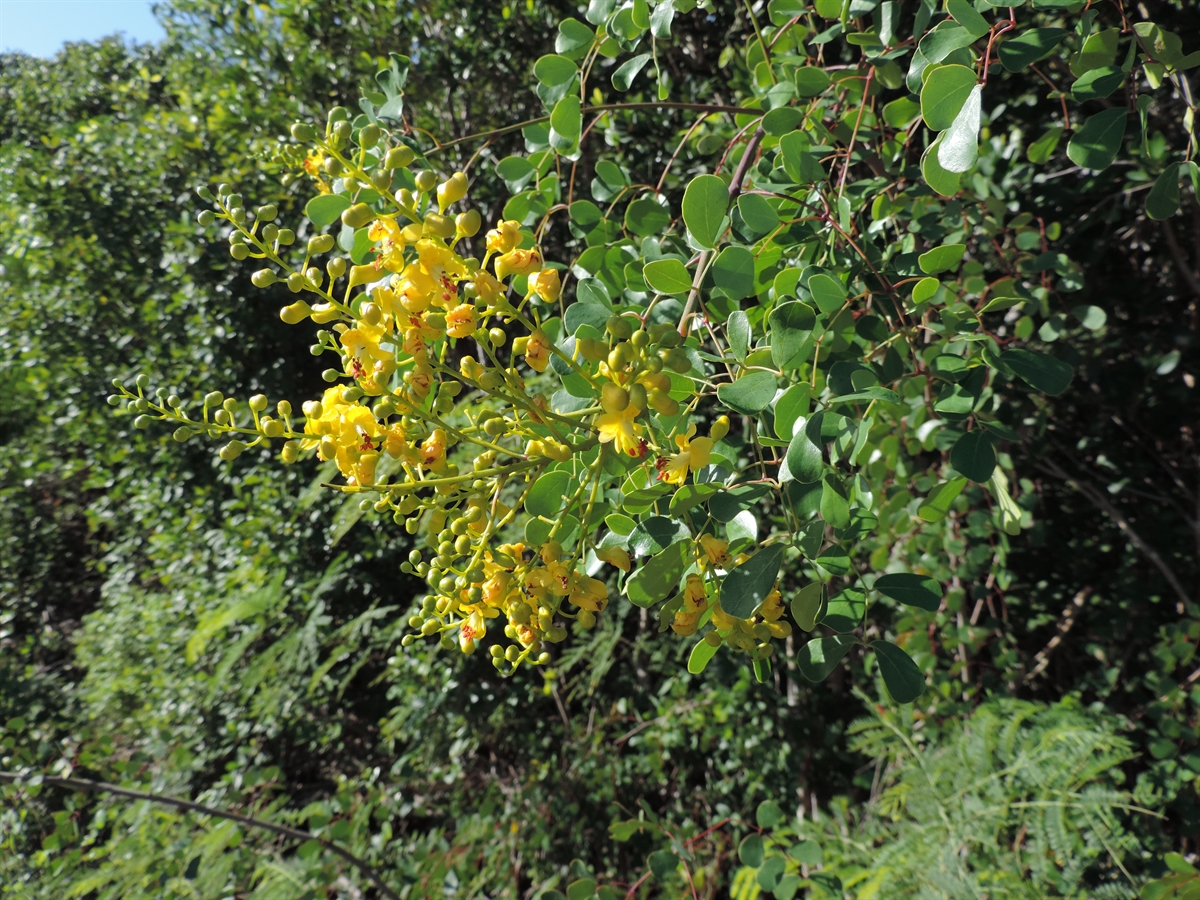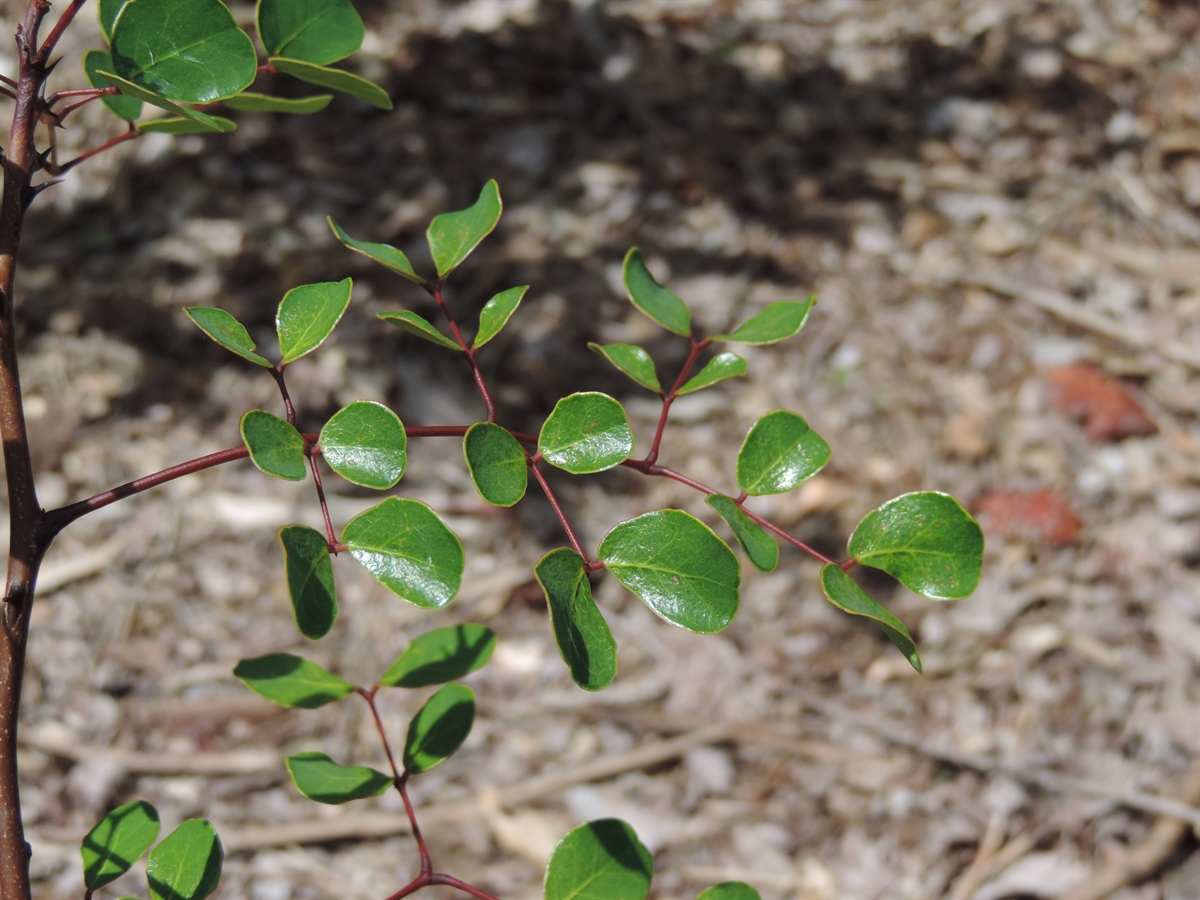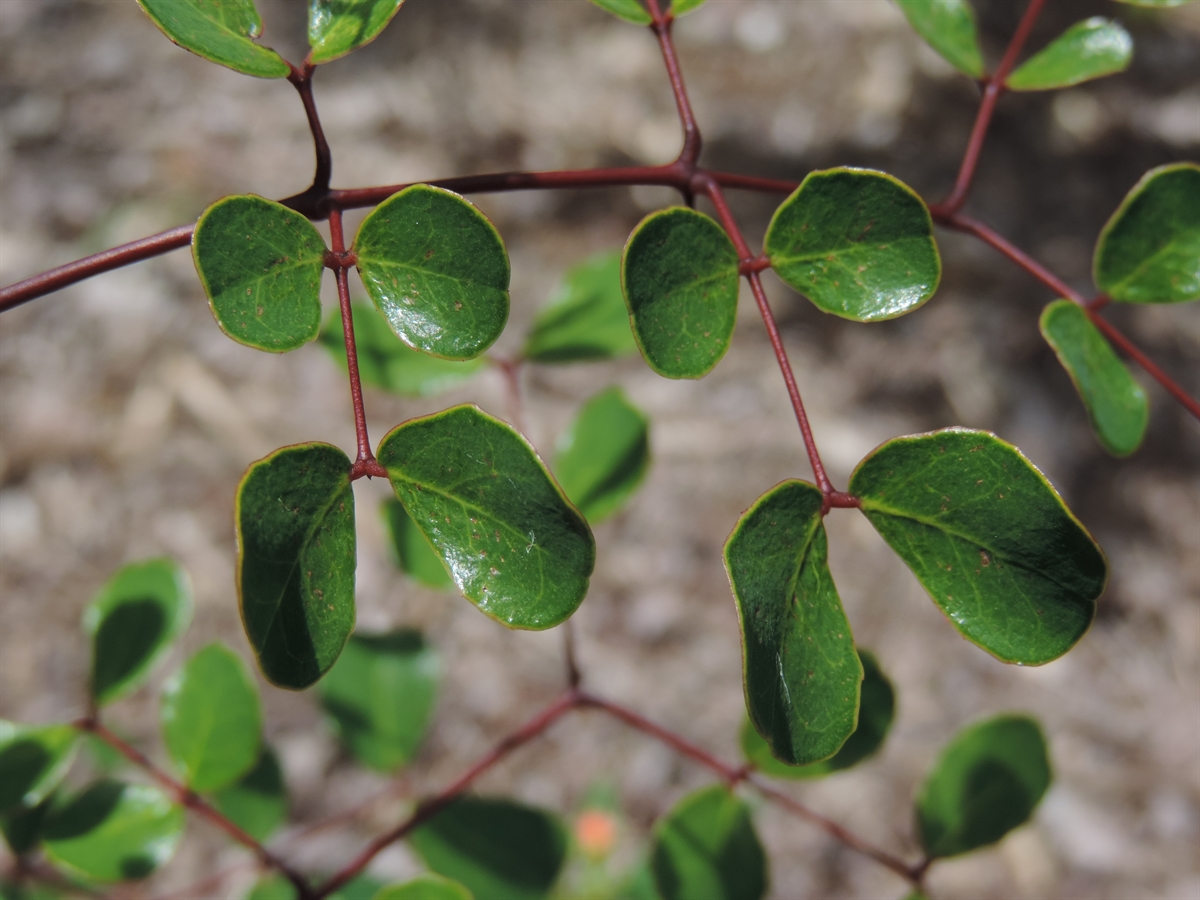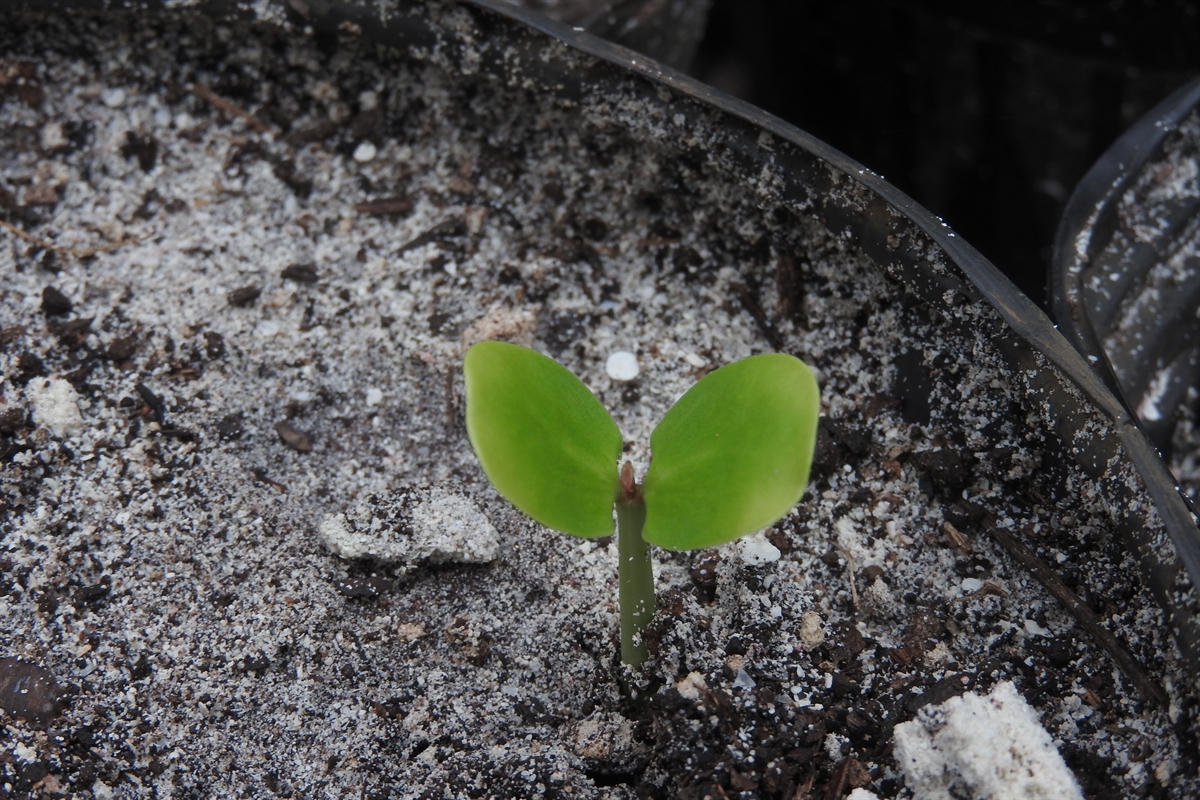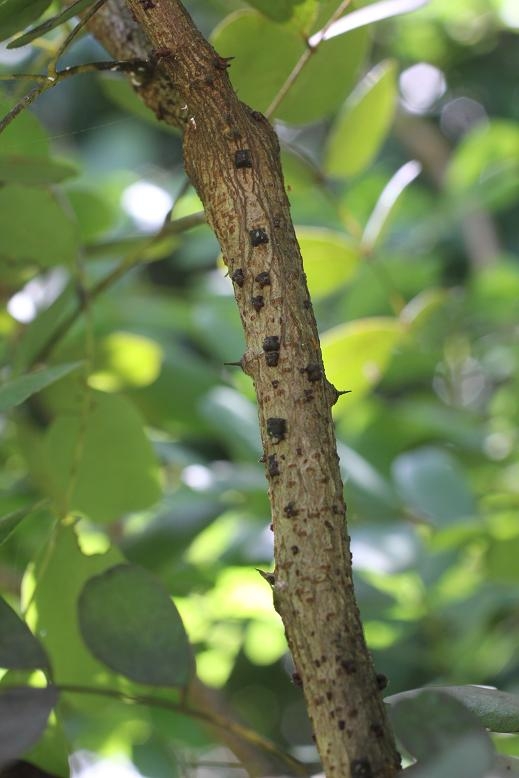Habit: Tara vesicaria grows as a shrub or small tree to 8 meters in height. The bipinnately compound eaves are arranged alternately, to 30 cm long. The leaflets are in 1-3 pairs, to 5 cm long, obovate, rounded to emarginate at the apex with an entire margin and an oblique leaf base. Spines may be present at the leaf axils.
The complete, perfect, zygomorphic flowers are arranged in racemes (although they may at times have flowering branches from the inflorescence base). The calyx has 5 unfused green sepals. The corolla has 5 bright yellow unfused petals with the lower petal bent to form a keel and the upper banner often with red/orange markings. There are 9 stamens that are the same length as the corolla. The ovary is superior with a single locule. the fruit is a legume that turns bright red at maturity.
Habitat: Tara vesicaria grows in Dry Broadleaf Evergreen Formation –Forest/Woodland/Shrubland (coppice and scrublands).
Distribution: Tara vesicaria occurs primarily in the central and northern island groupings of the Lucayan Archipelago as well as the Caribbean region and Mexico.
Medicinal/Cultural/Economic usage: Tara vesicaria has a long history in the Lucayan Archipelago. It has been used medicinally to treat low blood pressure. The wood has been highly sought after for producing a red dye.
The Eleutheran Adventurers sent 10 tons of it back to Massachusetts in the 16th century to repay for supplies that were sent to them. The money that came from the sale of the Brasilletto went to purchasing the first building at Harvard University.

